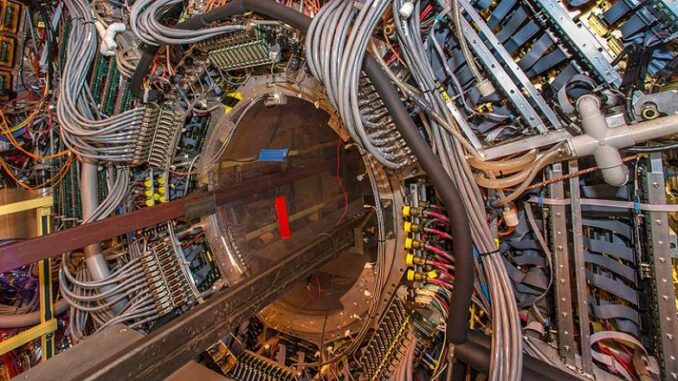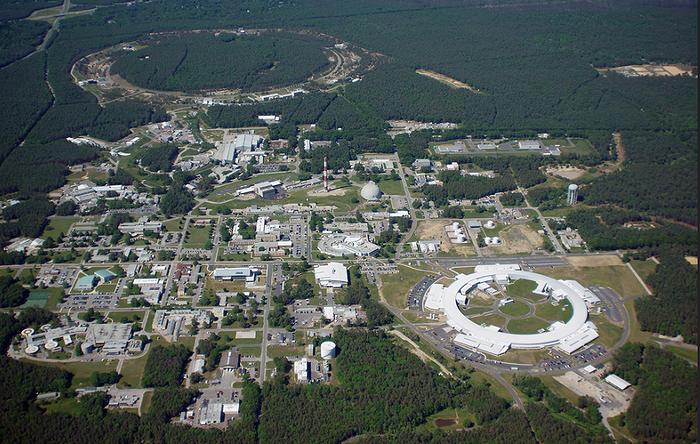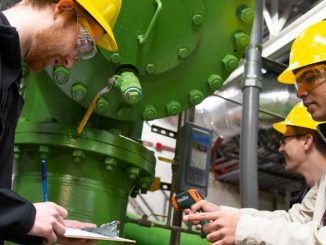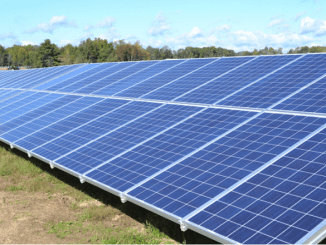
ALBANY, New York, April 12, 2024 (ENS) – The world’s most exciting cutting-edge Electron-Ion Collider, expected to generate fresh insights into the structure and behavior of atomic particles, will be built over the next 10 years at the U.S. Department of Energy’s Brookhaven National Laboratory on Long Island, 67 miles east of New York City.
A type of particle accelerator collider, the Electron-Ion Collider, EIC, is designed to smash spin-polarized beams of electrons and ions into each other. Two intersecting accelerators, one producing an intense beam of electrons, the other a beam of protons or heavier atomic nuclei, are steered into head-on collisions, so scientists can study the properties of nuclear matter in detail, Brookhaven Lab explains.

This particle collider is unique as it will be the only electron-nucleus collider operating globally that is designed to allow scientists to produce precision 3-D snapshots of the particles’ internal structures, similar to the way a medical CT scanner works but on an atomic level, Brookhaven Lab Director JoAnne Hewitt explains.
To get the Electron-Ion Collider project underway, the State of New York’s Empire State Development agency this week executed a $100 million grant disbursement agreement for the project, an act that launches New York State’s investment in this effort to support breakthroughs in energy, science, technology, and medicine.
“With this $100 million state investment, we are one step closer to bringing this transformative, one-of-a-kind technology to New York State,” Governor Kathy Hochul, a Democrat, said, announcing the funding agreement Tuesday.
“Brookhaven National Laboratory’s Electron-Ion Collider will expand our state’s capability to achieve unimaginable breakthroughs in science, attract innovative 21st century businesses, and create good-paying jobs,” the governor said.
The overall cost of building the EIC is estimated at US$2.8 billion. Plans call for the collider to be constructed over the next decade by scientists, engineers, and technical staff from Brookhaven Lab.

They will work in partnership with scientists from the Thomas Jefferson National Accelerator Facility in Newport News, Virginia, a U.S. Department of Energy Office of Science national laboratory. Scientists there and from across the world already utilize this lab’s unique particle accelerator, known as the Continuous Electron Beam Accelerator Facility, to probe the most basic building blocks of matter.
Brookhaven Lab was selected by the Department of Energy, DOE, as the site of the world’s only next-generation polarized Electron-Ion Collider.
Following negotiations between Empire State Development and DOE, the state’s $100 million investment was finalized in February 2024. Over the next four years, these funds will support the design, construction, and hardware infrastructure installation of the initial four buildings out of a potential 14 that are a part of the EIC project.

While the state’s portion is expected to be complete by 2027, the overall construction of the EIC is expected to continue until 2033. The scientific and technical components of EIC and its science program will be funded by the federal government through the DOE Office of Science, Office of Nuclear Physics.
U.S. Energy Secretary Jennifer Granholm is enthusiastic, not only about Brookhaven, but also about the country’s 16 other National Laboratories. “The National Labs are national treasures – critical to maintaining our global leadership in science, and economic anchors for their surrounding communities.”
“The Electron-Ion Collider is a quintessential lab project, opening new vistas for scientific discovery, and in the process hiring hundreds of Long Island union workers to build the collider. I am grateful to Governor Hochul along with Senators [Charles] Schumer and {Kirsten} Gillibrand for their leadership on this game-changing initiative,” Granholm said.
The EIC is expected to have broad-ranging impacts beyond nuclear physics, impacting health, medicine, national security, and industrial applications with its advanced particle beam technology.
New York State Assemblymember Jodi Giglio, a Republican who represents Brookhaven’s district, supports the project, saying, “Brookhaven National Lab is the center of scientific development on Long Island, and our investment in the Electron-Ion Collider will ensure that BNL remains at the forefront of nuclear physics research in both the United States, and the world.”

“The EIC will attract the best and brightest minds to Brookhaven National Labs and inspire the next generation of scientists to unlock the deepest secrets of our universe. I know that the science we support today will trigger benefits for our society tomorrow, benefits that will impact medicine, human health, energy, and national security,” Giglio said. “Securing BNL’s place in the world is securing our future, and I am proud to support this funding, and the lab it promotes.”
The wider world of nuclear physicists is watching the project intently. The Electron-Ion Collider User Group, EICUG, https://www.eicug.org/with more than 1,400 physicists from over 290 laboratories and universities in 38 countries is working together to help realize the powerful new facility in the United States with the aim of studying the particles, gluons, which bind all the observable matter in the world around us.
Featured image: There is another collider already at Brookhaven, the Relativistic Heavy Ion Collider, RHIC. Shown is this collider’s solenoidal tracker, a detector that tracks particles produced by each ion collision at RHIC. This house-sized collider searches for signatures of quark-gluon plasma and can investigate the behavior of matter at high energy densities. September 18, 2013 (Photo courtesy Brookhaven National Laboratory)



